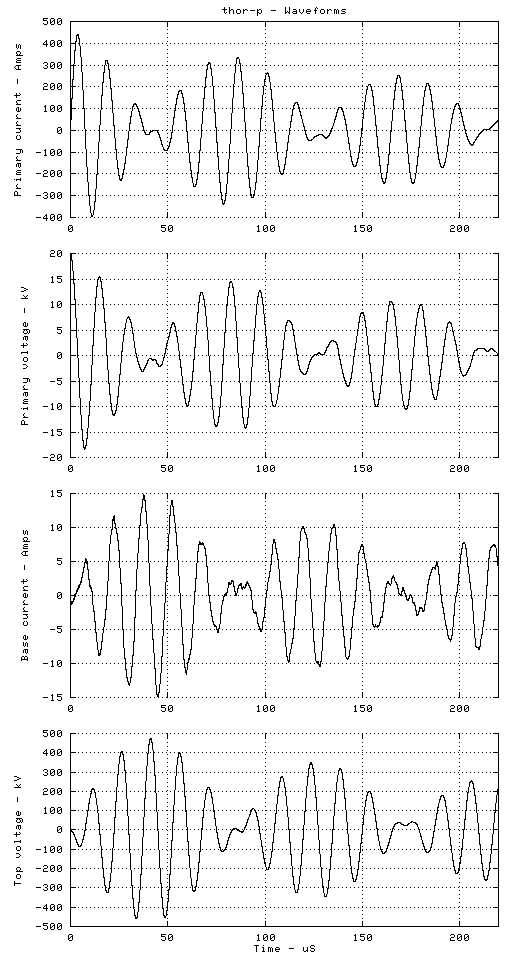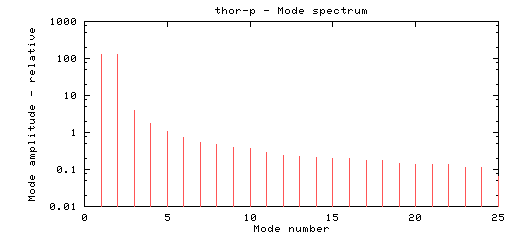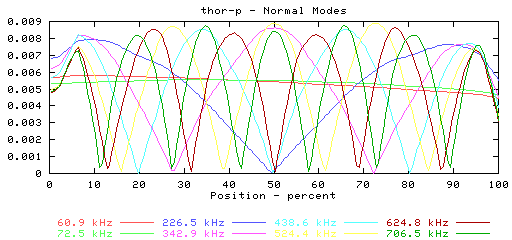We are working towards efficient time domain modeling, the software for which is currently under test. This page shows some of the outputs obtained so far. The system modeled for these plots is Marco Denicolai's Thor. All plots are for the linear regime below breakout. The simulator will also model the non-linear behaviour, but this has not yet been tested.
![]() Theory Notes
The first part of a DRAFT document pn1401. Still a work in progress.
Theory Notes
The first part of a DRAFT document pn1401. Still a work in progress.
![]() Waveforms
Example time domain plots.
Waveforms
Example time domain plots.
![]() Waveform Comparisons
Comparison with measured response.
Waveform Comparisons
Comparison with measured response.
![]() More Waveform Comparisons
Looking more closely at the higher modes.
More Waveform Comparisons
Looking more closely at the higher modes.
![]() Secondary in motion
Waveforms and animations for various tunings and couplings.
Secondary in motion
Waveforms and animations for various tunings and couplings.
![]() Mode Spectrum
The spectrum of mode amplitudes in a Tesla coil.
Mode Spectrum
The spectrum of mode amplitudes in a Tesla coil.
![]() Mode Functions
Voltage distributions of the resonant modes.
Mode Functions
Voltage distributions of the resonant modes.
| Waveforms |

Time domain response predicted for Thor. The initial bang was 20kV
across 56nF. The breakout voltage estimated by E-Tesla for this toroid,
on the basis of a 26kV/cm surface gradient as the threshold for avalanche,
is around 440kV, so this coil should just break out at the peak of the
first beat. Note the small amount of higher mode ringing, most visible
in the secondary base current.
For an experimental comparison of a similar set of waveforms made
by Terry Fritz, see tfss270501.
| Mode Spectrum |

The relative amplitudes of the lowest 25 normal modes of the coupled
resonator. Note that the bulk of the energy is to be found in the lowest
two modes, with the higher modes at less than 10% of these. As long as
the system remains linear, ie below breakout, the mode spectrum remains
constant. Discharges from the topload result in a redistribution of
energy amongst the available modes, ie a mixing or scattering of the
modes, and the nice neat picture above alters significantly.
| Mode Functions |

The spatial distribution of the first eight normal modes. Modeled
at modest resolution for speed of software testing, hence the slight
distortions - caused by aliasing between the differing resolutions of the
capacitance matrix and mutual inductance matrix. Note the similarity
of the two lowest 'operational' modes. These two modes differ in the
polarity of the associated primary current.